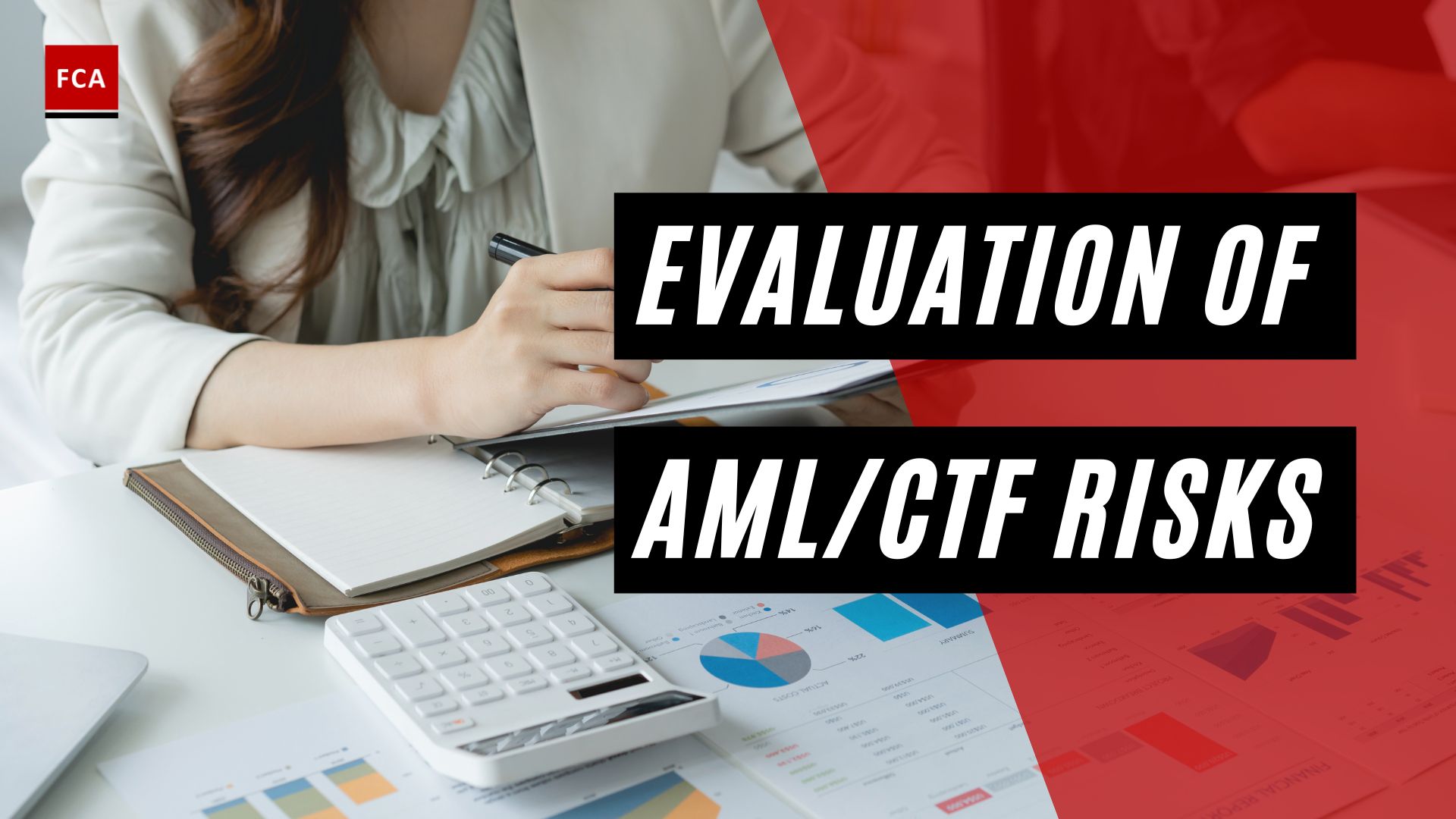Assessing the Effectiveness of AML Training
When it comes to measuring the impact of AML training, organizations recognize the importance of evaluating the effectiveness of their training initiatives. By assessing the impact, they can ensure that the training programs are successful in enhancing the knowledge and skills of employees in combating money laundering and terrorist financing. In order to effectively measure the impact of AML training, there are key dimensions and metrics that organizations should consider.
Importance of Measuring AML Training Impact
Measuring the impact of AML training is crucial for several reasons. Firstly, it allows organizations to determine whether the training has led to increased knowledge, changes in behavior, and ultimately reduced risks related to money laundering and terrorist financing. Secondly, it provides insights into the effectiveness of the training programs, enabling organizations to identify areas for improvement and make informed decisions on resource allocation. Lastly, measuring the impact of AML training demonstrates a commitment to regulatory compliance and a proactive approach to mitigating financial crime risks.
Key Dimensions to Assess AML Training
The impact of AML training can be measured across three key dimensions: effectiveness, efficiency, and engagement. These dimensions provide a comprehensive view of the training’s impact and help organizations evaluate different aspects of the training programs.
- Effectiveness: This dimension assesses the extent to which the training has achieved its intended outcomes. It involves measuring the knowledge gained, changes in behavior, and the ability to identify and report suspicious activities. Evaluating the effectiveness of AML training requires organizations to define specific learning objectives and align them with the desired outcomes.
- Efficiency: Measuring the efficiency of AML training focuses on resource optimization and cost-effectiveness. It involves assessing the training delivery methods, utilization of technology, and the ability to reach a wide audience. Organizations can leverage data analytics to gain insights into the efficiency of their training programs and identify opportunities for improvement.
- Engagement: Engaging employees in AML training is essential for effective learning and retention. This dimension assesses the level of employee engagement during the training process. It involves evaluating the design and delivery of training content, incorporating interactive elements, and providing real-life scenarios and case studies to enhance engagement.
Metrics for Measuring Effectiveness
To measure the effectiveness of AML training, organizations can utilize various metrics that provide quantitative and qualitative insights. These metrics serve as benchmarks to assess the impact of training initiatives and determine the effectiveness of the programs. Some commonly used metrics include:
- Training Completion Rates: This metric measures the percentage of employees who have completed the AML training program. It provides an indication of the overall engagement and compliance with the training requirements.
- Assessment Scores: Assessments and quizzes can be used to measure the knowledge gained from AML training. By evaluating the scores achieved by employees, organizations can assess the effectiveness of the training in enhancing understanding and identifying areas that may require further reinforcement.
- Post-Training Performance Improvement: Measuring the performance improvement of employees after completing AML training can provide insights into the practical application of knowledge and skills. This metric can be assessed through the analysis of key performance indicators relevant to AML compliance and risk management.
By utilizing these metrics and considering the key dimensions of effectiveness, efficiency, and engagement, organizations can gain a comprehensive understanding of the impact of their AML training programs. This enables them to make informed decisions, enhance the effectiveness of their training initiatives, and strengthen their overall anti-money laundering efforts.
Measuring AML Training Effectiveness
To assess the impact of Anti-Money Laundering (AML) training, it is essential to measure its effectiveness using various metrics. By evaluating training completion rates, assessment scores, and post-training performance improvement, organizations can gauge the efficacy of their AML training initiatives.
Training Completion Rates
Tracking training completion rates provides valuable insights into the engagement and commitment of employees towards AML training. This metric measures the percentage of employees who have successfully completed the training program. It helps organizations understand the extent to which employees are actively participating in AML training and complying with regulatory requirements.
Monitoring training completion rates allows organizations to identify any gaps in training participation. It also serves as an indicator of the overall awareness and understanding of AML regulations among employees. By benchmarking completion rates against industry standards, organizations can evaluate the effectiveness of their training efforts in comparison to their peers.
Assessment Scores
Assessment scores play a crucial role in measuring the knowledge and comprehension gained by employees during AML training. By conducting pre- and post-training assessments, organizations can evaluate the knowledge gap before and after the training program. This assessment helps identify areas where employees may require additional support or targeted training interventions.
Assessment scores provide quantitative data on employees’ understanding of AML regulations, policies, and procedures. Organizations can track individual and group scores to assess the overall effectiveness of the training program. Additionally, comparing assessment scores over time can help organizations identify trends and measure the impact of ongoing training efforts.
Post-Training Performance Improvement
One of the key indicators of AML training effectiveness is the extent to which employees apply their knowledge and skills in real-world scenarios. Post-training performance improvement measures employees’ ability to apply AML concepts and procedures to their day-to-day responsibilities. It evaluates whether the training has positively influenced employees’ behaviors and decision-making processes.
Organizations can assess post-training performance improvement through various means, such as evaluating employees’ ability to identify suspicious activities, properly document customer due diligence, and adhere to transaction monitoring protocols. This assessment can be done through direct observations, case studies, or performance evaluations.
By analyzing the improvement in post-training performance, organizations can identify the practical impact of AML training on mitigating money laundering risks and enhancing compliance efforts.
Measuring the effectiveness of AML training through metrics like training completion rates, assessment scores, and post-training performance improvement enables organizations to identify areas of strength and improvement. It provides valuable insights into the overall impact of the training program and assists in refining future training initiatives to ensure ongoing compliance and risk mitigation.
Enhancing Efficiency through Data Analytics
To effectively measure the impact of AML training, organizations can leverage data analytics to gain valuable insights and optimize their training programs. By harnessing the power of data, compliance professionals can enhance the efficiency of their measurement efforts and improve the effectiveness of AML training initiatives.
Leveraging Data Insights
Data analytics plays a critical role in assessing the effectiveness of AML training programs. By analyzing relevant metrics and data points, organizations can gain valuable insights into the performance and outcomes of their training efforts. Some key data insights to consider include:
- Training completion rates: Tracking the percentage of employees who successfully complete AML training programs provides a benchmark for assessing the overall engagement and commitment to compliance training.
- Assessment scores: Evaluating the scores achieved by employees in post-training assessments helps measure their understanding of AML concepts and identify areas that may require additional focus.
- Post-training performance improvement: Monitoring the performance of employees after completing AML training can provide insights into the practical application of knowledge gained through the training program.
By analyzing these data points, organizations can identify trends, patterns, and areas of improvement in their AML training initiatives. This data-driven approach enables targeted interventions and enhancements to training content, delivery methods, and evaluation criteria. For further information on AML training evaluation metrics, refer to our article on aml training evaluation metrics.
Technology for Efficient Measurement
Technology plays a crucial role in enhancing the efficiency of measuring the impact of AML training. Utilizing technological tools and solutions can streamline data collection, analysis, and reporting processes. Some key technologies that support efficient measurement of AML training impact include:
- Regtech software: This technology assists risk and compliance professionals in various AML processes, including transaction monitoring, suspicious activity reporting, and compliance with regulatory requirements. By leveraging advanced algorithms and automation, Regtech software enables organizations to detect and mitigate suspicious activity more effectively. For more information on this topic, refer to Unit21.
- E-learning platforms and learning management systems (LMS): These technological solutions provide organizations with the ability to deliver AML training content, track completion rates, and assess employee performance. E-learning platforms and LMS enable organizations to collect and analyze data on training participation, assessment results, and staff performance over time. This data-driven approach facilitates ongoing evaluation and improvement of AML training programs. To learn more about the role of technology in AML training, refer to our article on technology for efficient measurement.
By embracing data analytics and leveraging technology, organizations can enhance the efficiency of measuring the impact of AML training. These tools enable compliance professionals to gain valuable insights, optimize training programs, and allocate resources effectively. By continuously evaluating and adapting their AML training initiatives, organizations can strengthen their anti-money laundering efforts and ensure compliance with regulatory requirements.
Driving Engagement through Interactive Content
To ensure the effectiveness of AML training programs and engage employees, it is crucial to design interactive and engaging content. By incorporating elements that actively involve participants, AML training can become more impactful and memorable. Two effective approaches for driving engagement are designing engaging AML training and utilizing real-life scenarios and case studies.
Designing Engaging AML Training
Engaging AML training is essential to capture the attention and interest of participants. Traditional, lecture-style training can be monotonous and may not effectively convey the importance and complexities of AML regulations. To enhance engagement, training programs should embrace interactive elements that encourage active participation.
One way to achieve this is through the use of multimedia content, such as videos, interactive quizzes, and simulations. These interactive elements provide a dynamic learning experience, allowing participants to apply their knowledge in practical scenarios. Additionally, incorporating gamification elements, such as leaderboards and rewards, can further motivate participants to actively engage with the training material.
Furthermore, utilizing real-life examples and case studies can help participants understand the practical implications of AML regulations. By showcasing real-world scenarios, participants can see the direct impact of their decisions and actions. This approach fosters a deeper understanding of AML concepts and encourages critical thinking and problem-solving skills.
Real-Life Scenarios and Case Studies
Real-life scenarios and case studies are powerful tools for illustrating the relevance and application of AML procedures. By presenting participants with realistic situations, they can better comprehend the challenges and decision-making processes involved in combating money laundering and financial crimes.
Real-life scenarios can be used to simulate suspicious transaction detection, customer due diligence procedures, and reporting processes. Participants can analyze and assess these scenarios, applying their knowledge of AML regulations to make informed decisions. This hands-on approach enhances their understanding of the complexities and nuances of AML compliance.
Case studies provide an opportunity to explore notable money laundering cases and their consequences. By examining these cases, participants can gain insights into the methods employed by criminals, the red flags that were missed, and the impact of non-compliance. This analysis helps participants recognize the importance of their role in preventing money laundering and reinforces the significance of AML training.
By designing engaging AML training and incorporating real-life scenarios and case studies, organizations can create an interactive learning environment that promotes active participation and deepens participants’ understanding of AML regulations and procedures. This approach not only enhances the effectiveness of AML training but also empowers employees to effectively identify and address potential risks within their organizations.
Best Practices in AML Training
To effectively combat money laundering, it is essential to implement best practices in AML training. This section explores three key areas of focus: KYC procedures and authentication, transaction monitoring and suspicious activity detection, and the role of technology in AML training.
KYC Procedures and Authentication
Verifying a customer’s identity through Know Your Customer (KYC) procedures is a crucial aspect of AML compliance. It is required under AML regulations to have a high-quality KYC system in place to authenticate customer information and determine if customers are who they claim to be (Unit21). Effective KYC procedures involve thorough identity verification, document validation, and risk assessment.
By implementing robust KYC procedures, organizations can ensure that they have a comprehensive understanding of their customers, their activities, and their associated risks. This enables them to detect and prevent potential money laundering and terrorist financing activities effectively.
Transaction Monitoring and Suspicious Activity Detection
Monitoring transaction patterns is a critical component of AML efforts. By analyzing transaction data, organizations can identify red flags and detect suspicious activity. Some common indicators of suspicious activity include transactions to offshore accounts, small-value transactions to the same account, and regular transfers to risky or sanctioned jurisdictions (Unit21).
To effectively monitor transactions, organizations should employ advanced analytics and machine learning techniques. These technologies help in detecting unusual patterns, identifying anomalies, and generating alerts for further investigation. Regular training on transaction monitoring techniques ensures that compliance professionals are equipped with the necessary skills to identify and address potential risks.
Role of Technology in AML Training
Technology plays a crucial role in enhancing the effectiveness of AML training programs. Regtech software, for instance, supports risk and compliance professionals in various aspects of AML compliance, including transaction monitoring, suspicious activity reporting, and regulatory compliance (Unit21). These tools leverage automation and artificial intelligence to streamline processes and improve accuracy.
Additionally, technology enables organizations to conduct ongoing monitoring and assessment of AML training effectiveness. By utilizing learning management systems and advanced analytics, organizations can track and analyze training completion rates, assessment scores, and post-training performance improvement. This data-driven approach helps in identifying areas of improvement and optimizing future training initiatives.
By implementing best practices in AML training, organizations can strengthen their compliance efforts and minimize the risk of money laundering and financial crimes. KYC procedures and authentication, transaction monitoring and suspicious activity detection, and the use of technology are essential pillars in building an effective AML training program. It is crucial for organizations to continually evaluate and adapt their AML training strategies to keep pace with evolving risks and regulatory requirements.
Insights from Industry Experts
To gain a comprehensive understanding of measuring the impact of AML training, it is valuable to consider insights from industry experts. These experts stress the significance of continuous assessment and adaptation, the role of evaluations and assessments, and the importance of leveraging strengths within AML programs.
Importance of Continuous Assessment and Adaptation
Industry experts emphasize the importance of continuous assessment and adaptation in AML training programs. They recognize that money laundering activities and associated risks are continually evolving, requiring training initiatives to stay relevant and effective. By regularly reassessing and adapting training content, methodologies, and delivery, organizations can ensure that their AML training remains aligned with the latest regulatory requirements and industry best practices.
Assessing Impact through Evaluations and Assessments
To effectively measure the impact of AML training, evaluations, surveys, and assessments play a crucial role. Through evaluations and assessments, organizations can gather quantitative and qualitative data on the knowledge gained by participants, changes in behavior and performance, and the overall effectiveness of the training program.
By utilizing evaluation criteria and metrics designed for AML training effectiveness analysis, organizations can obtain valuable insights into the strengths and weaknesses of their training initiatives. These evaluations provide a basis for identifying areas of improvement, making necessary adjustments, and enhancing the overall impact of AML training. Visit our article on assessing aml training effectiveness for a detailed examination of evaluation criteria and metrics.
Leveraging Strengths within AML Programs
Recognizing and leveraging strengths within AML programs is another vital aspect of measuring their impact. Hennie Verbeek-Kusters highlights the need to identify and utilize the potential within an AML program. By capitalizing on existing strengths, organizations can amplify the positive impact of their AML training efforts.
This approach involves identifying the areas of the program that have been successful in deterring money laundering activities and promoting compliance. By understanding and leveraging these strengths, organizations can further enhance their training initiatives and measure their impact more effectively. For more information on this topic, refer to our article on aml training evaluation metrics.
By incorporating continuous assessment and adaptation, conducting thorough evaluations and assessments, and leveraging the strengths within AML programs, organizations can effectively measure the impact of their AML training initiatives. These insights from industry experts provide valuable guidance for professionals working in compliance, risk management, anti-money laundering, and anti-financial crime.








